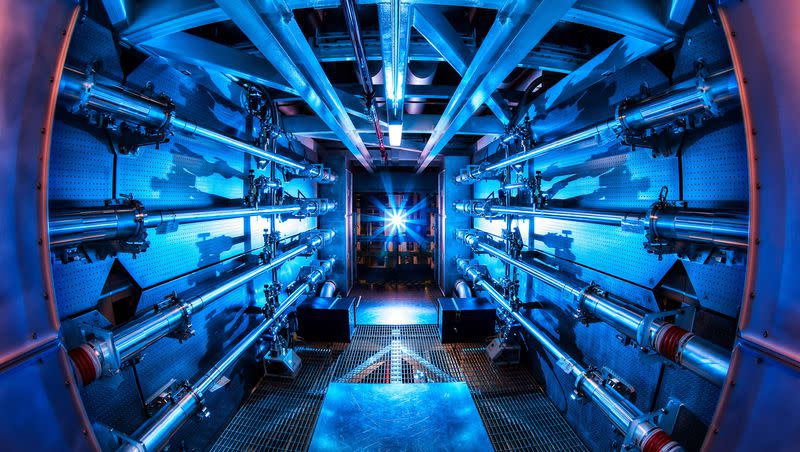U.S. scientists able to repeat breakthrough fusion experiment that could unlock key to boundless, clean energy

Researchers at Lawrence Livermore National Laboratory successfully replicated a breakthrough nuclear fusion experiment that could lead to a clean, safe and nearly limitless future energy source.
Scientists at Livermore’s National Ignition Facility were able to repeat a fusion ignition reaction on July 30 that resulted in a net energy gain larger than the results from the December experiment when a successful outcome, creating more energy than is needed to fuel the fusion reaction, was first achieved.
The landmark experiment represents an unprecedented accomplishment for fusion energy research but scientists note that the process remains a long way from the scale required to provide a meaningful level of power generation.
Related
Fusion works when nuclei of two atoms are subjected to extreme heat of 100 million degrees Celsius (180 million Fahrenheit) or higher leading them to fuse into a new larger atom, giving off enormous amounts of energy, per a breakdown by Reuters.
But the process consumes vast amounts of energy and the trick has been to make the process self-sustaining, allowing more energy out than goes in, and to do so continuously instead of for brief moments.
Livermore scientists achieved this goal for the first time in December, in a process called “ignition,” that used the world’s largest and highest energy laser system, called the National Ignition Facility, to fuse hydrogen atoms
A tiny capsule containing two forms of hydrogen is suspended inside a cylindrical X-ray “oven” called a hohlraum, according to posting on the Lawrence Livermore website. When the hohlraum is heated by NIF’s powerful lasers to temperatures of more than 3 million degrees Celsius, the resulting X-rays heat and blow off, or ablate, the surface of the target capsule, called the ablator. This causes a rocket-like implosion that compresses and heats the fuel to extreme temperatures and densities until the hydrogen atoms fuse, creating helium nuclei and releasing high-energy neutrons and other forms of energy.
The $3.5 billion ignition experiment device is massive, utilizing twin 10-story towers that produce 192 intense laser beams that travel some 1,500 meters before concentrating within the reaction chamber.
While the excess energy produced in the experiment is relatively tiny, the technique has huge potential if it can be scaled commercially as an energy source.
“It’s about what it takes to boil 10 kettles of water,” Jeremy Chittenden, co-director of the Centre for Inertial Fusion Studies at Imperial College in London, told CNN following the successful December experiment. “In order to turn that into a power station, we need to make a larger gain in energy — we need it to be substantially more.”
The prospects for fusion-generated energy are immense. The reactions do not release any greenhouse gases or radioactive byproducts and the fuel source-to-generation ratios dwarf fossil fuel energy production. One gram of fusion reaction fuel, like deuterium or tritium, has the potential to produce as much energy as eight tons of petroleum, according to a report from CNN.

